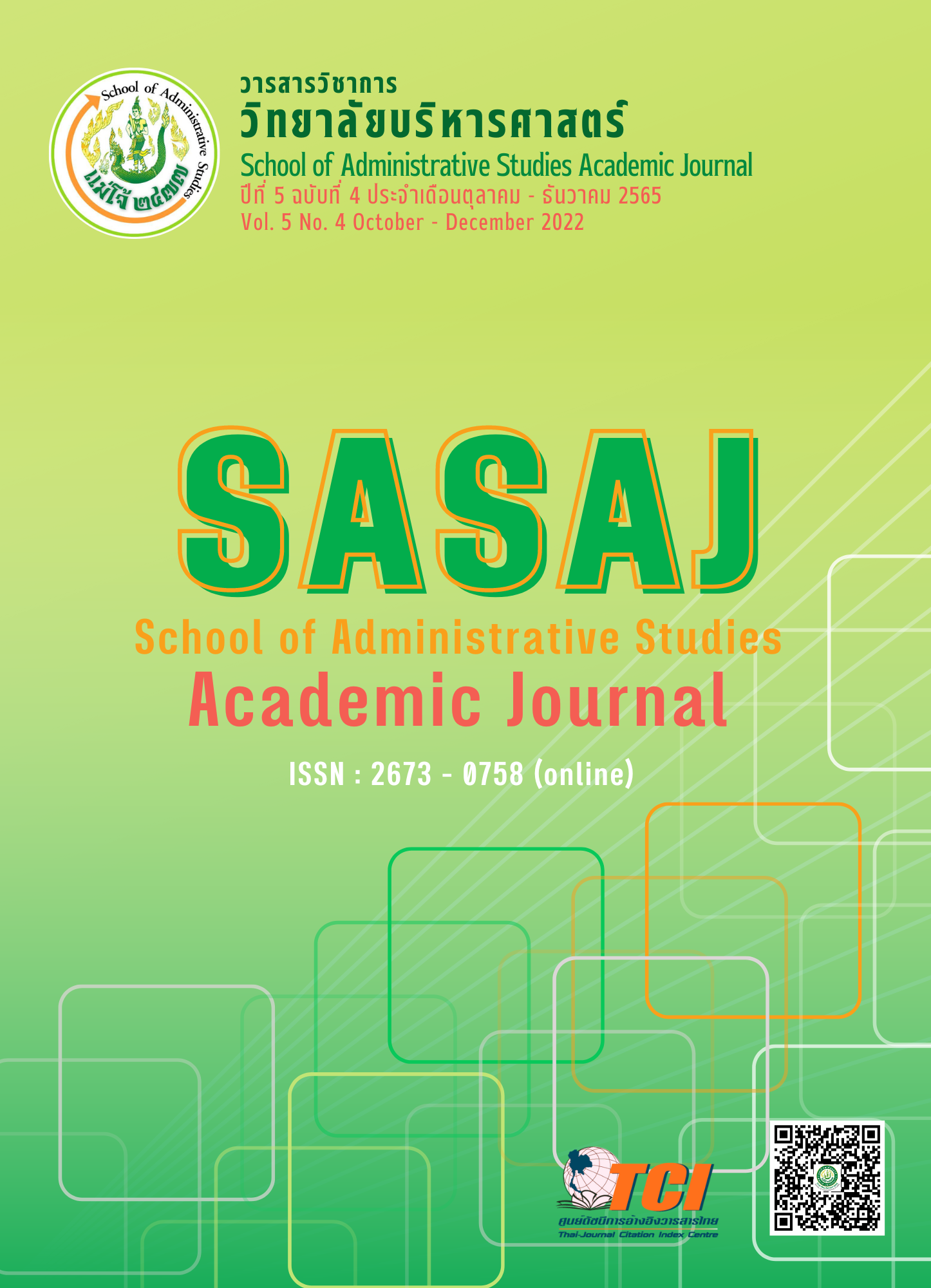ความเหนื่อยหน่ายในการทำงานและความยึดมั่นผูกพันต่อองค์กรของบุคลากร คณะสาธารณสุขศาสตร์และสหเวชศาสตร์ สถาบันพระบรมราชชนก
Main Article Content
บทคัดย่อ
การวิจัยครั้งนี้มีวัตถุประสงค์เพื่อศึกษา 1) ระดับความเหนื่อยหน่ายในการทำงานและความยึดมั่นผูกพันต่อองค์กร 2) ความสัมพันธ์ระหว่างปัจจัยคัดสรรกับความเหนื่อยหน่ายในการทำงาน 3) ความสัมพันธ์ระหว่างปัจจัยคัดสรรกับความยึดมั่นผูกพันต่อองค์กรของบุคลากร และ 4) ความสัมพันธ์คาโนนิคอลระหว่างความเหนื่อยหน่ายในการทำงานและความยึดมั่นผูกพันต่อองค์กร เก็บรวบรวมข้อมูลโดยใช้แบบสอบถาม โดยมีกลุ่มตัวอย่างจำนวน 455 คน จากบุคลากรผู้ปฏิบัติงานในสังกัดคณะสาธารณสุขศาสตร์และสหเวชศาสตร์ สถาบันพระบรมราชชนก จำนวน 9 แห่ง
ผลการศึกษาพบว่า กลุ่มตัวอย่างมีความเหนื่อยหน่าย ด้านความอ่อนล้าทางอารมณ์ อยู่ในระดับปานกลาง ด้านการลดความสัมพันธ์ส่วนบุคคล และด้านความรู้สึกไม่ประสบความสำเร็จ อยู่ในระดับต่ำ ส่วนความยึดมั่นผูกพันต่อองค์กรทั้ง 3 ด้าน ได้แก่ ด้านความเชื่อถือและยอมรับเป้าหมายและค่านิยมขององค์กร ด้านความเต็มใจที่จะปฏิบัติงานเพื่อองค์กร และด้านความต้องการที่จะรักษาความเป็นสมาชิกขององค์กร อยู่ในระดับปานกลาง ปัจจัยคัดสรรที่มีความสัมพันธ์กับความเหนื่อยหน่ายทั้ง 3 ด้าน ได้แก่ ปัจจัยสภาพการทำงาน ด้านสัมพันธภาพในองค์กร ส่วนปัจจัยคัดสรรที่มีความสัมพันธ์กับความยึดมั่นผูกพันต่อองค์กร ทั้ง 3 ด้าน ได้แก่ อายุ ระยะเวลาการทำงาน ปัจจัยสภาพการทำงาน ด้านลักษณะงาน ด้านสัมพันธภาพในองค์กร และด้านการรับรู้ต่อระบบบริหาร เมื่อวิเคราะห์ความสัมพันธ์ คาโนนิคอลระหว่างความเหนื่อยหน่ายและความยึดมั่นผูกพันต่อองค์กร พบว่า มีความสัมพันธ์กันสูง (Rc=0.531) และค่าน้ำหนักคาโนนิคอลของชุดตัวแปรความเหนื่อยหน่ายที่มีน้ำหนักสูงสุด คือ ด้านความอ่อนล้าทางอารมณ์ (-0.433) ส่วนชุดตัวแปรความยึดมั่นผูกพันต่อองค์กร คือ ด้านความต้องการที่จะรักษาความเป็นสมาชิกขององค์กร (0.912) ซึ่งปัจจัยสภาพการทำงาน ด้านสัมพันธภาพในองค์กร มีความสัมพันธ์กับความเหนื่อยหน่ายในการทำงานและความยึดมั่นผูกพันต่อองค์กรอย่างชัดเจน ดังนั้นหากมีการสร้างสัมพันธภาพที่ดีในการทำงาน อาจช่วยลดความเหนื่อยหน่ายในการทำงาน และเพิ่มความยึดมั่นผูกพันต่อองค์กรให้กับบุคลากรได้
Article Details

อนุญาตภายใต้เงื่อนไข Creative Commons Attribution-NonCommercial-NoDerivatives 4.0 International License.
ลิขสิทธิ์
เอกสารอ้างอิง
ถาวร อ่อนลออ. (2561). ความผูกพันต่อองค์กรและคุณภาพชีวิตในการทำงานของบุคลากร มหาวิทยาลัยเทคโนโลยีราชมงคลพระนคร. วารสารนวัตกรรมการศึกษาและการวิจัย 2(2), 101-116.
นูรีมัน ดอเลาะ, อนิวัช แก้วจำนงค์, และ อรจันทร์ ศิริโชติ. (2556). ความผูกพันต่อองค์การของบุคลากรมหาวิทยาลัยนราธิวาสราชนครินทร์. วารสารมหาวิทยาลัยนราธิวาสราชนครินทร์, 5(3), 110-121.
พรชัย สิทธิศรัณย์กุล. (2563). ภาวะหมดไฟไม่ใช่โรคแต่เป็นปรากฏการณ์เหตุอาชีพ. จุฬาลงกรณ์เวชสาร, 2(2), 115-119.
มัณฑนา ตุลยนิษกะ. (2552). ปัจจัยที่มีความสัมพันธ์กับความผูกพันต่อองค์การของบุคลากร กรณีศึกษาคณะวิทยาศาสตร์ จุฬาลงกรณ์มหาวิทยาลัย (วิทยานิพนธ์ปริญญามหาบัณฑิต). จุฬาลงกรณ์มหาวิทยาลัย, กรุงเทพฯ.
ศรีสกุล เฉียบแหลม, และ เพ็ญนภา แดงด้อมยุทธ. (2562). ภาวะหมดไฟในการทํางาน. แพทยสารทหารอากาศ, 65(2), 44-52.
สถาบันพระบรมราชชนก. (2564). การบริหารงานบุคคล. สืบค้นจาก http://dot.pi.ac.th/#/dashboard/tab
สุนันท์ษา นิธิวาสิน. (2562). ภาวะติดงาน ความเครียดจากกงานและภาวะหมดไฟในครูโรงเรียนเตรียมทหาร (วิทยานิพนธ์ปริญญามหาบัณฑิต). จุฬาลงกรณ์มหาวิทยาลัย, กรุงเทพฯ.
สุฬดี กิตติวรเวช, และ ณิชา ว่องไว. (2564). ความผูกพันต่อองค์กรของอาจารย์คณะพยาบาลศาสตร์ มหาวิทยาลัยอุบลราชธานี. วารสารมนุษยศาสตร์และสังคมศาสตร์ มหาวิทยาลัยอุบลราชธานี, 12(1), 161-179.
อติญาณ์ ศรเกษตริน, ชุติมา มาลัย, ปาณิสรา ส่งวัฒนายุทธ, และ สุทธานันท์ กัลกะ. (2563). วิทยาลัยสังกัดสถาบันพระบรมราชชนกกับการผลิตและพัฒนาบุคลากรสุขภาพระดับปฐมภูมิ : ในยุคการปรับเปลี่ยน. ราชาวดีสาร วิทยาลัยพยาบาลบรมราชชนนี สุรินทร์, 10(2), 80-92.
Affum-Osei, E., Acquaah, E., & Acheampong, P. (2015). Relationship between organisational commitment and demographic variables: Evidence from a commercial bank in Ghana. American Journal of Industrial and Business Management, 5(12), 769.
Akdemir, Ö. A. (2019). The effect of teacher burnout on organizational commitment in Turkish context. Journal of Education and Training Studies, 7(4), 171-179.
Alshmemri, M., Shahwan-Akl, L., & Maude, P. (2017). Herzberg’s two-factor theory. Life Science Journal, 14(5), 12-16.
Baker, G. (2011). The roles of leaders in high-performing health care systems. Retrieved from https://www.kingsfund.org.uk/sites/default/files/roles-of-leaders-high-performing-health-care-systems-ross-baker-kings-fund-may-2011.pdf
Dockel, A., Basson, J. S., & Coetzee, M. (2006). The effect of retention factors on organisational commitment: An investigation of high technology employees. SA Journal of Human Resource Management, 4(2), 20-28.
Enginyurt, O., Cankaya, S., Aksay, K., Tunc, T., Koc, B., Bas, O., & Ozer, E. (2015). Relationship between organizational commitment and burnout syndrome: a canonical correlation approach. Australian Health Review, 40(2), 181-187.
Goering, D. D., Shimazu, A., Zhou, F., Wada, T., & Sakai, R. (2017). Not if, but how they differ: A meta-analytic test of the nomological networks of burnout and engagement. Burnout Research, 5, 21-34.
Grawitch, M. J., & Ballard, D. W. (2016). The psychologically healthy workplace: building a win-win environment for organizations and employees. In M. J. Grawitch & D. W. Ballard (Eds.), Introduction: Building a psychologically healthy workplace. (pp. 3-11). Washington, DC: American Psychological Association.
Hoboubi, N., Choobineh, A., Ghanavati, F. K., Keshavarzi, S., & Hosseini, A. A. (2017). The impact of job stress and job satisfaction on workforce productivity in an Iranian petrochemical industry. Safety and health at work, 8(1), 67-71.
Leiter, M. P., & Maslach, C. (1988). The impact of interpersonal environment on burnout and organizational commitment. Journal of organizational behavior, 9(4), 297-308.
Maslach, C., & Leiter, M. P. (2008). Early predictors of job burnout and engagement. Journal of applied psychology, 93(3), 498.
Mathieu, J. E., & Zajac, D. M. (1990). A review and meta-analysis of the antecedents, correlates, and consequences of organizational commitment. Psychological bulletin, 108(2), 171.
Meyer, J. P., & Allen, N. J. (1991). A three-component conceptualization of organizational commitment. Human resource management review, 1(1), 61-89.
Mowday, R. T., Steers, R. M., & Porter, L. W. (1979). The measurement of organizational commitment. Journal of vocational behavior, 14(2), 224-247.
Raghuramapatruni, R., & Kosuri, S. (2017). The straits of success in a VUCA world. IOSR Journal of Business and Management, 19, 16-22.
Santoso, A. L., Sitompul, S. A., & Budiatmanto, A. (2018). Burnout, organizational commitment and turnover intention. Journal of Business and Retail Management Research, 13(1), 62-69.
Sarisik, M., Bogan, E., Zengin, B., & Dedeoglu, B. B. (2019). The impact of burnout on organizational commitment: A study of public sector employees in Turkey. Journal of global business insights, 4(2), 106-118.
Sepahvand, F., Atashzadeh-Shoorideh, F., Parvizy, S., & Tafreshi, M. Z. (2017). The relationship between some demographic characteristics and organizational commitment of nurses working in the Social Security Hospital of Khorramabad. Electronic physician, 9(6), 4503.
Sherry, A., & Henson, R. K. (2005). Conducting and interpreting canonical correlation analysis in personality research: A user-friendly primer. Journal of personality assessment, 84(1), 37-48.
Stairs, M., & Galpin, M. (2010). Positive engagement: From employee engagement to workplace happiness. In P. A. Linley, S. Harrington, & N. Garcea (Eds.), Oxford handbook of positive psychology and work (pp. 155–172). United Kingdom: Oxford University Press.
Welch, M. (2011). The evolution of the employee engagement concept: communication implications. Retrieved from https://www.emerald.com/insight/content/doi/10.1108/13563281111186968/full/html


